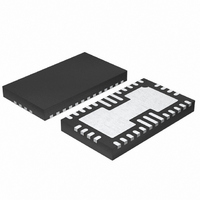LT6604CUFF-5#PBF Linear Technology, LT6604CUFF-5#PBF Datasheet - Page 12

LT6604CUFF-5#PBF
Manufacturer Part Number
LT6604CUFF-5#PBF
Description
IC AMP DIFF LN DUAL 34-QFN
Manufacturer
Linear Technology
Specifications of LT6604CUFF-5#PBF
Amplifier Type
Differential
Number Of Circuits
2
Output Type
Differential
Current - Input Bias
30µA
Voltage - Input Offset
8000µV
Current - Supply
30mA
Voltage - Supply, Single/dual (±)
3 V ~ 11 V, ±1.5 V ~ 5.5 V
Operating Temperature
0°C ~ 70°C
Mounting Type
Surface Mount
Package / Case
34-QFN
No. Of Amplifiers
2
Input Offset Voltage
35mV
Bandwidth
5MHz
Supply Voltage Range
3V To 11V
Supply Current
30mA
Amplifier Case Style
QFN
No. Of Pins
34
Rohs Compliant
Yes
Lead Free Status / RoHS Status
Lead free / RoHS Compliant
Current - Output / Channel
-
-3db Bandwidth
-
Slew Rate
-
Gain Bandwidth Product
-
Available stocks
Company
Part Number
Manufacturer
Quantity
Price
APPLICATIONS INFORMATION
LT6604-5
Noise
The noise performance of the LT6604-5 channel can be
evaluated with the circuit of Figure 7. Given the low noise
output of the LT6604-5 and the 6dB attenuation of the
transformer coupling network, it is necessary to measure
the noise fl oor of the spectrum analyzer and subtract the
instrument noise from the fi lter noise measurement.
Example: With the IC removed and the 25Ω resistors
grounded, Figure 7, measure the total integrated noise
(e
the IC inserted, the signal source (V
the input resistors grounded, measure the total integrated
noise out of the fi lter (e
set the frequency to 1MHz and adjust the amplitude until
V
V
compute the input referred integrated noise (e
Table 1 lists the typical input referred integrated noise for
various values of R
Table 1. Noise Performance
PASSBAND
GAIN
4
2
1
12
IN
OUT
S
e
) of the spectrum analyzer from 10 kHz to 5MHz. With
measures 100mV
IN
, and compute the passband gain A = V
=
V
(e
IN
R
200Ω
402Ω
806Ω
O
IN
)
R
R
2
IN
IN
A
– (e
34
4
6
2
IN
S
–
+
.
INPUT REFERRED
INTEGRATED NOISE
10kHz TO 5MHz
24μV
38μV
69μV
25
1/2
LT6604-5
O
P-P
–2.5V
)
2.5V
7
). With the signal source connected,
2
+
–
. Measure the output amplitude,
Figure 7
RMS
RMS
RMS
0.1μF
0.1μF
27
29
25Ω
25Ω
IN
COILCRAFT
TTWB-1010
) disconnected, and
INPUT REFERRED
NOISE dBm/Hz
–149
–145
–140
1:1
OUT
SPECTRUM
ANALYZER
IN
/V
INPUT
) as:
IN
66045 F07
50Ω
. Now
Figure 8 is plot of the noise spectral density as a function
of frequency for an LT6604-5 with R
fi xture of Figure 7 (the instrument noise has been sub-
tracted from the results).
The noise at each output is comprised of a differential
component and a common mode component. Using a
transformer or combiner to convert the differential outputs
to single-ended signal rejects the common mode noise and
gives a true measure of the S/N achievable in the system.
Conversely, if each output is measured individually and the
noise power added together, the resulting calculated noise
level will be higher than the true differential noise.
Power Dissipation
The LT6604-5 amplifi ers combine high speed with large
signal currents in a small package. There is a need to en-
sure that the die’s junction temperature does not exceed
150°C. The LT6604-5 has an exposed pad (pin 35) which
is connected to the lower supply (V
to a ground plane helps to dissipate the heat generated
by the chip. Metal trace and plated through-holes can be
used to spread the heat generated by the device to the
backside of the PC board.
45
40
35
30
25
20
15
10
5
0
0.01
Figure 8. Input Referred Noise
INTEGRATED NOISE, GAIN = 1X
INTEGRATED NOISE, GAIN = 4X
NOISE DENSITY, GAIN = 1X
NOISE DENSITY, GAIN = 4X
0.1
FREQUENCY (MHz)
1
–
). Connecting the pad
10
IN
= 806Ω using the
66045 F08
100
90
80
70
60
50
40
30
20
10
0
66045fa











